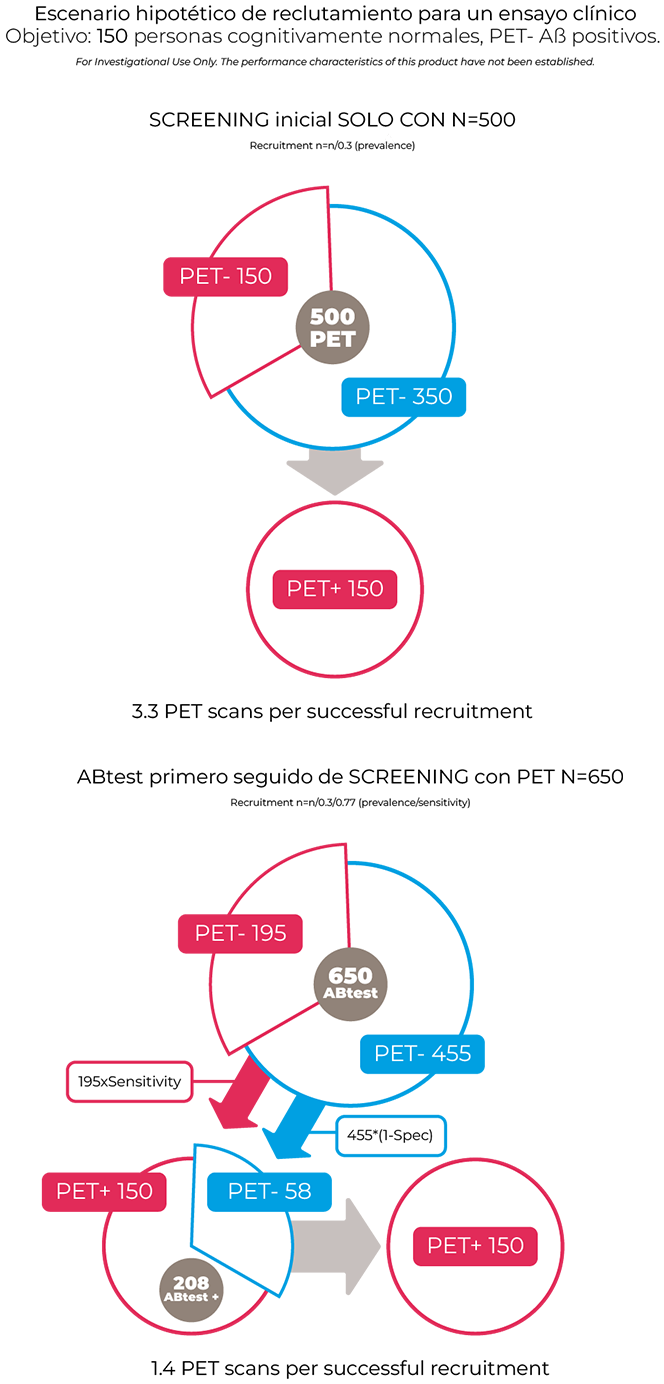The free fraction (FP40 and FP42) obtained by our immunoassay is determined from an undiluted sample and represents the fraction of these peptides that is directly available in the sample, free of interactions with other plasma components that prevent their immuno-detection.
The total levels (TP40 and TP42) are obtained from an aliquot of the same sample, diluted in a proprietary buffer so that, together with the free one, the fraction of these peptides that was initially sequestered for the assay due to their interactions with other plasma components is also measured. Overall, the free fraction represents only about 40% of the total peptide quantified.
